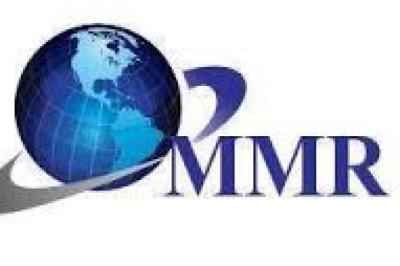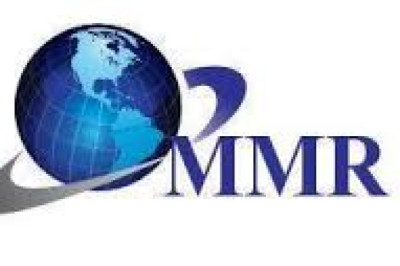views
Optical fingerprint scanners require the user's finger to be placed on a glass plate, whereas capacitive scanners capture and read the fingerprint through an electronic circuit. Ultrasonic fingerprint attendance systems project high-frequency sound waves to create an image of the user's fingerprint.
Depending on the application and environment of use, the choice of fingerprint attendance system may vary. In this article, we will explore the different types of fingerprint attendance systems available, their features, and their suitability for different industries and organizations. We'll also discuss the benefits of using a fingerprint attendance system and how it can help improve employee accountability and productivity.
Biometric Time And Attendance Systems
Biometric time and attendance systems are becoming increasingly popular in the workforce. They work by using an employee's unique physiological traits, such as fingerprints, to record their hours worked. The advantages of biometric systems are the accuracy of the data, preventing time theft and the reduced costs in time management.
However, these systems can result in privacy concerns, employee discomfort, and initial investment costs. The limitations of the biometric system are that it is not practical for mobile or remote sites, and it cannot track breaks or measure productivity. Biometric systems are ideal for companies operating from a fixed location with a large number of employees, showing a clear change in the workforce’s time management practices.
Face Recognition Systems
Face recognition systems are relatively new in the world of attendance tracking. These systems use a camera to capture an image of the face that is then analyzed by a software program. The system then compares the image to a database of faces to determine if there is a match.
One major advantage of face recognition systems is that they are fast and accurate. However, these systems can be expensive and require a good quality camera. Additionally, they can sometimes have trouble recognizing faces if there are changes in lighting or if someone is wearing glasses or a hat.
Despite these limitations, face recognition systems are becoming more popular as technology continues to advance.
Rfid Fingerprint Attendance Systems
Rfid fingerprint attendance systems rely on biometric technology to authenticate user identity. Employees place their finger on the device; if the fingerprint matches the information in the system, the employee is cleared for entry or exit. The system eliminates the need for manual tracking and prevents buddy punching.
Advantages of rfid fingerprint attendance systems include accurate time tracking, reduced administrative burden, and enhanced security. Limitations include the need for precise finger alignment, which may not be comfortable for all users. Additionally, physical changes to fingerprints, such as cuts or smudges, may interfere with accurate readings.
Overall, rfid fingerprint attendance systems offer a secure and efficient method of tracking employee attendance.
Smart Card Fingerprint Attendance Systems
Smart card fingerprint attendance systems are an innovative development in attendance tracking solutions. These systems stand out due to the dual features of smart card technology and fingerprint authentication. In such systems, each employee is given a smart card that contains their unique biometric data.
The employee places their finger on a fingerprint reader, and their attendance is recorded in the system. The system can then be used to generate attendance reports, timesheets, and employee logs. One of the advantages of these systems is their high accuracy and security.
However, these systems may be expensive to set up and maintain. If you're considering implementing a smart card fingerprint attendance system, it's crucial to look into the costs associated with this technology. Overall, these systems provide great value for organizations looking for efficient and secure attendance tracking solutions.
Mobile Attendance Systems
Mobile attendance systems are becoming increasingly popular as an alternative to traditional fingerprint attendance systems. With this technology, employees can clock in and out using their mobile devices instead of a physical device. Mobile attendance systems use gps technology or qr code scanning to verify an employee's location, ensuring attendance accuracy.
As with any technology, there are advantages and limitations to mobile attendance systems. On the positive side, they offer flexibility and convenience for employees, reducing the need for physical devices. However, they may not be suitable for certain industries or jobs where verification of physical presence is essential.
Additionally, network connectivity issues may prevent accurate clock-ins and outs, leading to potential inaccuracies.
Cloud-Based Fingerprint Attendance Systems
The ZKteco uFace 800 is an innovative cloud-based fingerprint attendance system that revolutionizes the way employee attendance is managed. By storing data on the cloud instead of physical servers or devices, this system provides convenient access to attendance information from anywhere, at any time, for authorized personnel.
With robust security measures in place, including data encryption and multiple server backups, the ZKteco uFace 800 ensures the utmost protection of sensitive attendance data. However, it is important to consider some limitations of cloud-based systems. Firstly, a stable internet connection is crucial as the system heavily relies on it, and network outages may disrupt the attendance tracking process.
Furthermore, since the system operates in the cloud, it may require additional maintenance and technical support compared to traditional systems. Despite these considerations, the ZKteco uFace 800 Price in Bangladesh remains a reliable and secure choice for businesses of all sizes, offering enhanced accessibility and peace of mind.
Frequently Asked Questions On What Are The Different Types Of Fingerprint Attendance Systems Available?
What Is A Fingerprint Attendance System?
A fingerprint attendance system is a biometric technology that allows employees to clock in and out using their fingerprints.
What Are The Benefits Of Using A Fingerprint Attendance System?
Fingerprint attendance systems provide accurate and reliable time tracking, improve security, and decrease incidents of buddy punching.
What Types Of Fingerprint Attendance Systems Are Available In The Market?
There are different types of fingerprint attendance systems, including standalone systems, networked systems, and mobile systems.
Conclusion
Fingerprint attendance systems offer a convenient and secure way of tracking employee attendance. By using biometric recognition, organizations can eliminate the potential for time theft and errors associated with traditional attendance tracking methods. With a range of options available, businesses can choose the type of system that best suits their unique needs and budget.
While basic systems may offer simple tracking capabilities, advanced systems with features such as mobile access and integration with payroll software provide a more comprehensive solution. However, businesses should carefully evaluate their requirements and weigh the cost-benefit analysis before investing in any system.
With the increasing adoption of digital solutions in the workplace, fingerprint attendance systems present a cost-effective and modern solution to transform the way employee attendance is managed.











